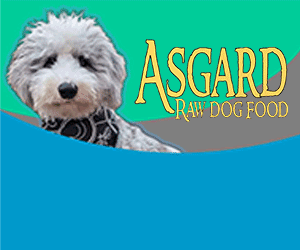Everyone wants the very best for their pet. And that includes having a cage large enough to sustain the comfort and health of our birds. In hard economic times, pet parents are looking for ways to save money on the equipment needed to house and maintain their pet(s). However, a word of caution to those considering a cage made from Galvanized Wire. Most Galvanized Wire is toxic to birds and can cause severe illness and death. There are two ways of processing Galvanized Wire, Electroplated and Hot Dipped. Many Veterinarians feel that Electroplated is safe. However, Hot Dipped is a major concern. If you plan on using Galvanized materials, be sure you can confirm which process was used to manufacture your supplies. I prefer to ere on the side of caution and not use any form of Galvanized products.
Galvanized Wire is treated with Zinc. The Zinc coating ensures that the wire will be easy to clean and free from any oxidation. Sounds like a great material to use for a cage. Right? You need to look at the behavior of most birds. Especially hookbills. Hookbills utilize their beaks in order to navigate through their cage by holding on to wires. It is this practice that makes birds susceptible to toxicity by potentially chipping the wire with their beaks and the flakes being ingested into the bird. Over time, the on-going ingestion of these flakes can accumulate Zinc and other metals within the bird’s liver and kidneys.
It’s not just Galvanized Wire. A pet parent should be mindful of other hardware such as toy hooks and clamps that may be galvanized. These objects can also chip and be ingested.
The continued ingesting of Zinc contributes to a condition known as Zinc Toxicosis. Symptoms of Zinc Toxicosis can include: high levels of urea in droppings, neurological signs such as appearing off-balance, the inability to perch or spending most of the time on the cage floor, dark green droppings or diarrhea, lethargy, weight loss, seizures, increased ingestion of water, decreased appetite, and sudden death.
Blood testing is required for a diagnosis of Zinc Toxicosis. In diagnosing, blood serum can reveal anemia, hyperglycemia, and an elevation in kidney enzymes. A level of Zinc over 2 parts per million is considered toxic. Zinc Toxicosis is treatable. However, it’s best to avoid possible exposure to these products by eliminating them from contact with your pet.
Brooke’s Story:
Two years ago, I was asked to foster a Goffin’s Cockatoo that was diagnosed with Zinc Toxicosis. Upon meeting Brooke, I was concerned by her condition and appearance. She was grossly underweight. (Half the body weight of a healthy Goffin’s Cockatoo.) Many of her feathers were either barbered or plucked. She had also started to exhibit self-mutilation by chewing a small hole in her upper breast. And nutrition was a great concern. This little girl was a parrot in crisis.
Upon receiving some of the historic background regarding Brooke, it was confirmed that she was housed in a Galvanized Cage. She had already received initial veterinary care that confirmed Zinc Toxicosis and a treatment plan was initiated. However, she didn’t seem to be thriving. The group of people responsible for her care felt that along with her underlying diagnosis of Zinc Toxicosis, she also was having difficulty acclimating to her surroundings. When I first laid eyes on this little soul, she appeared to be very uncomfortable and nervous. This could have also contributed to her self-mutilation. I had to help Brooke in any way possible. During our group meeting, this little cockatoo never left my side. At the end of the meeting, I agreed to foster Brooke in order to assist with her on-going care.
Over the next few months, Brooke began to put on weight and self- mutilation and feather plucking had lessened. Her little personality shined through once she understood that she was in a safe environment. Brooke was on the path to recovery. For the next year, Brooke continued to thrive and maintain her weight. She had also bonded with another Goffin’s Cockatoo that I was fostering by the name of Juliet. Brooke was very protective of Juliet. And I was happy that she had found comfort in another flock member. However, one day Brooke started to exhibit aggressive behavior with other members of my flock. I believed she was so protective of Juliet that other flock members were perceived as a threat. Sadly, for the safety of the entire flock, including Brooke and Juliet; another foster family agreed to care for my cockatoo girls. I was heartbroken. However, I truly felt that the new foster family would be able to provide an environment where Brooke would not feel the need to defend Juliet.
On July 12, 2019, Brooke and Juliet’s foster parent messaged to inform me that Brooke had passed suddenly without any sign of distress. The foster family elected not to conduct a necropsy. However, I cannot help but think that Brooke’s years of exposure to Zinc may have contributed to her sudden demise. I am quite confident that Brooke had damage to her liver from the exposure. What other damage had been done to her little body?
What would I like for you to take away from this article? Understand that Galvanized Wire can contribute to various health issues including death in our birds. And again, the best way to ensure that your bird does not suffer from Zinc Toxicosis is to avoid Galvanized Wire and products all together.
Fly free Brooke-Brooke, we will miss you….



